Paris Paralympics prove that Indians can compete with the best
A winning mindset was the key differentiator between Indian Paralympic and Olympic results in Paris.

Indian Paralympians delivered their best outing at Paris (Via Open Source/X)
India won a whopping 29 medals at the 2024 Paralympics in Paris. To give some perspective, the nation had won a total of 31 medals from 12 Paralympic appearances prior to 2024. Seven of India’s 16 Paralympic Gold medals were won in Paris 2024.
In short, the 17th Summer Paralympic Games have been a huge success for Indian sports and not just the Indian Paralympic movement. The 2024 Indian Paralympians have provided the template for how elite athletes, their coaches, federations, and the government need to approach future Olympic and Paralympic competitions.
At the Paris Paralympics, fans saw Indian para-athletes showcase determination, mental toughness and ‘clutchness’, the X-factor that separates champions from equally skilled competitors.
We saw shooter Avani Lekhara and javelin thrower Sumit Antil successfully defending their Golds, armless archer Sheetal Devi becoming a social media sensation after hitting a bullseye (and subsequently winning a Bronze) and sprinter Preethi Pal winning India’s first-ever track medal.
Those Indian para-athletes at the peak of their careers continued their dominance, para-athletes from sports where India has historically under-performed (such as track and judo) made their presence felt and youngsters showed that the potential for the future is limitless.
Contrast with the Olympics
The 2024 Paris Olympics were a disappointment for India, where the nation with 6 medals was unable to surpass the Tokyo 2020 tally of 7. The 2024 Paralympics, by contrast, were an improvement from Tokyo, where India had won 19 medals a massive leap from Rio 2016’s 4 medals. In Beijing 2008, India had registered its then-best-ever Olympic showing with 3 medals, including a gold, while the Paralympic contingent had returned empty-handed.
In Paris 2024 India was still struggling to match many of the benchmarks set by its athletes at the 2008 Olympics, whereas the country’s 2024 batch of para-athletes ensured a first-ever top 15 finish for the nation in the medal standings.
Archery, Athletics, Badminton, and Shooting, are the priority sports common to both the Indian Olympic and Paralympic programs that the government has identified as likely to yield the maximum medals for India in such and similar multi-sport competitions.
Let us compare the Paralympians’ performance against their able-bodied counterparts in these four sports at the Paris Games.
Archery
Harvinder Singh, the para-archer who won India’s first-ever Gold in the sport, diligently followed his South Korean coach Baek Woong Ki’s guidance to improve from a Bronze in Tokyo to a Gold in Paris. The same coach was denied accreditation to be with the Indian team for the Olympics amid rumors of a rift with senior archers in the squad.
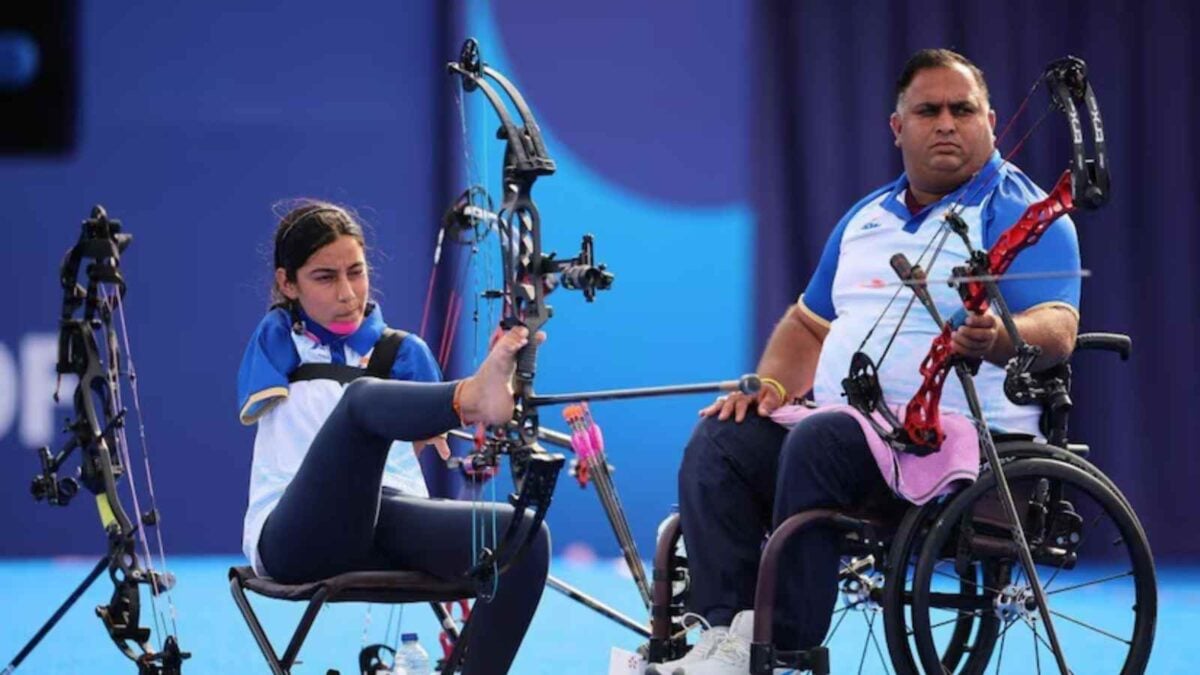
India had yet another disastrous showing in Olympic archery, with the exception of a fourth-place finish in Mixed Recurve, while para-archery was a resounding success. Apart from Harvinder’s Gold, Sheetal Devi and Rakesh Kumar won Bronze in Mixed Team Compound and there were two fourth-place finishes. Sheetal Devi’s performance got widespread international media attention and, still just 17, she has the potential to become India’s first global para-sport superstar.
It is easy to contrast Harvinder Singh and Sheetal Devi with Tarundeep Rai and Deepika Kumari and the right lessons need to be drawn by stakeholders in a sport that has a rich tradition in India since antiquity.
Shooting
Shooting was India’s most successful sport at the Olympics, with 3 medals from Manu Bhaker, Manu again with Sarabjot Singh, and Swapnil Kusale. However, this pales in contrast to the 1 Gold, 1 Silver and 2 Bronzes won by Avani Lekhara, Manish Narwal, Mona Agarwal, and Rubina Francis, respectively.
Though the Indian para-shooting medal tally regressed slightly from Tokyo’s 5 medals and 2 Golds, it was still better than what the able-bodied shooters have been able to produce at their best. The Indian para-shooters were fearless at critical moments and were able to convert their immense talent into results.
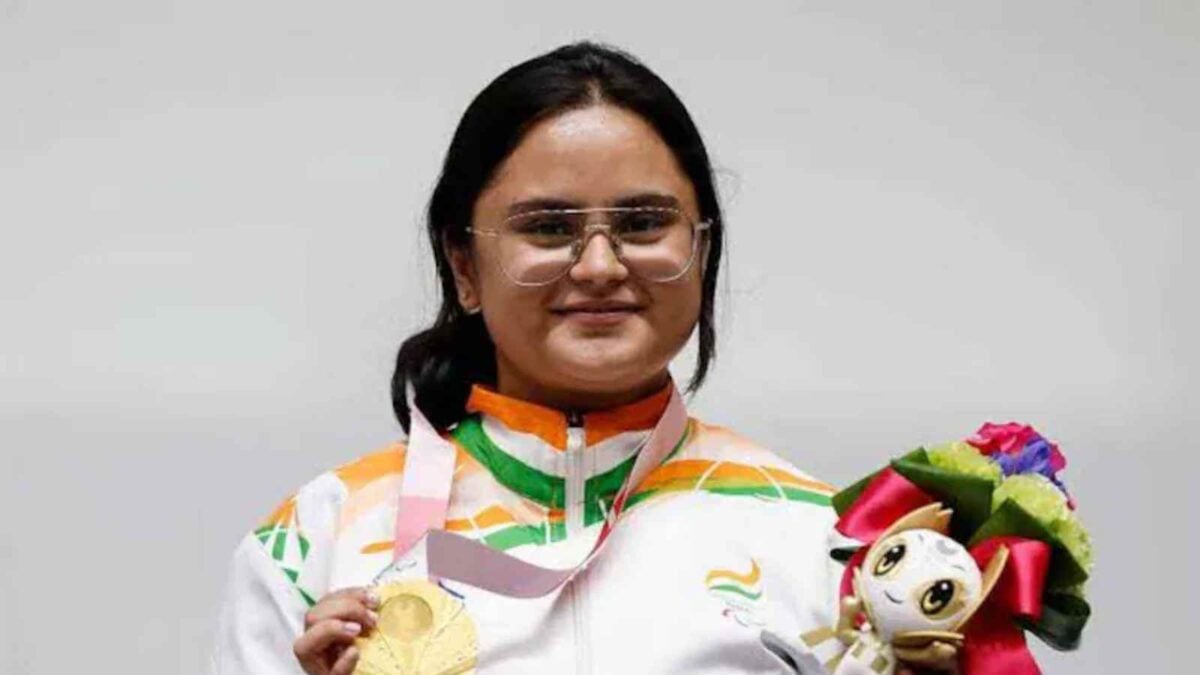
Avani Lekhara bettered her own Women’s 10m AR SH1 Finals Paralympic Record to shoot an impressive 249.7 and successfully defend her gold. Manish Narwal was out of the medal reckoning for a while in the Men’s 10m AP SH1 final but managed 7 10s between shots 9 and 16 to win Silver. The only customary shooting heartbreak was faced by Sriharsha Devaraddi who missed out on qualifying for the Mixed 10m AR SH2 Finals by only 0.1 points.
On the other hand, the crunch-moment meltdowns suffered by several Indian shooters at the Olympics have been well-documented on FirstSportz and have been the main cause for India under-achieving in a sport where it has some of the most skilled shooters in the world.
Athletics
While there was only a difference of one medal between the Indian shooting and para-shooting medal tally, the difference between the Indian para-athletes and their able-bodied colleagues could not be any starker.
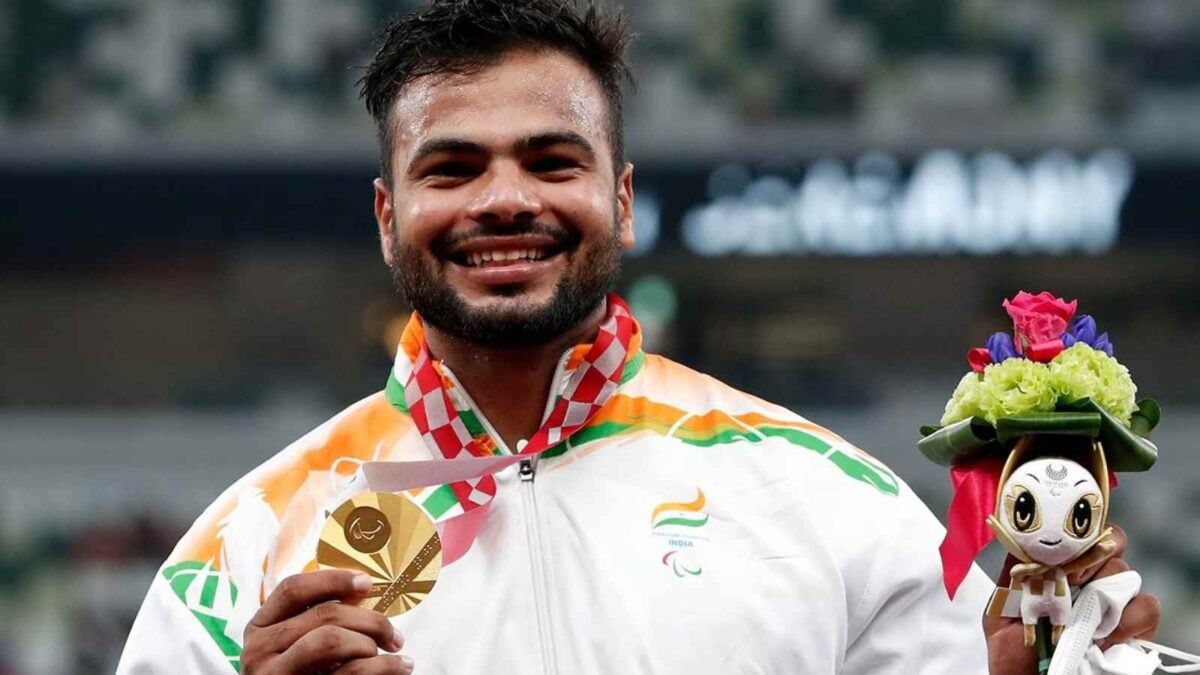
Neeraj Chopra provided the only ray of hope amid the doom and gloom that was India’s track-and-field campaign in the 2024 Olympics. The Indian para-athletes, however, enjoyed a brilliant run winning 4 Golds, 5 Silvers, and 7 Bronzes for a total of 17 medals.
A summary of the para-athletes’ performance:
- Sumit Antil with another Gold with PR in Men’s Javelin F64 cemented his place among India’s best-ever para-athletes.
- Praveen Kumar followed up his High Jump T64 Silver from Tokyo with a Gold in Paris.
- Dharambir Nain and Pranav Soorma ensured a 1-2 podium finish for India in Men’s Club Throw F51.
- Navdeep Singh, who initially won Silver with a PB in Men’s Javelin F41 was upgraded to Gold after the gold-medalist was disqualified.
- Preeti Pal won 2 Bronze medals in Women’s 100m and 200m T35.
- This was followed by more Track bronzes through Deepthi Jeevanji (Women’s 400m T20) and Simran Sharma (Women’s 200m T12).
- Ajeet Singh Yadav and Sundar Singh Gurjar won Silver and Bronze in Men’s Javelin F46; Sharad Kumar and Mariyappan Thangavelu did the same in High Jump T63.
- Nishad Kumar (High Jump T47) and Yogesh Kathuniya (Men’s Discus F56) both successfully defended their Silvers from Tokyo.
- Other medalists were Sachin Khilari (Silver with Asian Record in Men’s Shot Put F46) and Hokato Hotozhe Sema (Nagaland’s first-ever Paralympic medalist who won Bronze in Men’s Shot Put F57).
In the Olympics, only Neeraj Chopra and Avinash Sable reached the finals. Parul Chaudhary and the Men’s 4x400m Relay Teams’ SB times were the only other respectable finishes for the 27-member Indian athletics contingent.
Badminton
Prakash Padukone created a stir with his comments, after Indian shuttlers could not win a single medal at the Paris Olympics, that the players were not working hard enough despite world-class facilities being provided to them.
Padukone, however, will find no reason to complain about the Indian para-badminton performance. India won 5 para-badminton medals (1 Gold, 2 Silvers and 2 Bronzes) in Paris, a feat that was similar to Tokyo 2020 (2 Golds, 1 Silver, 1 Bronze).
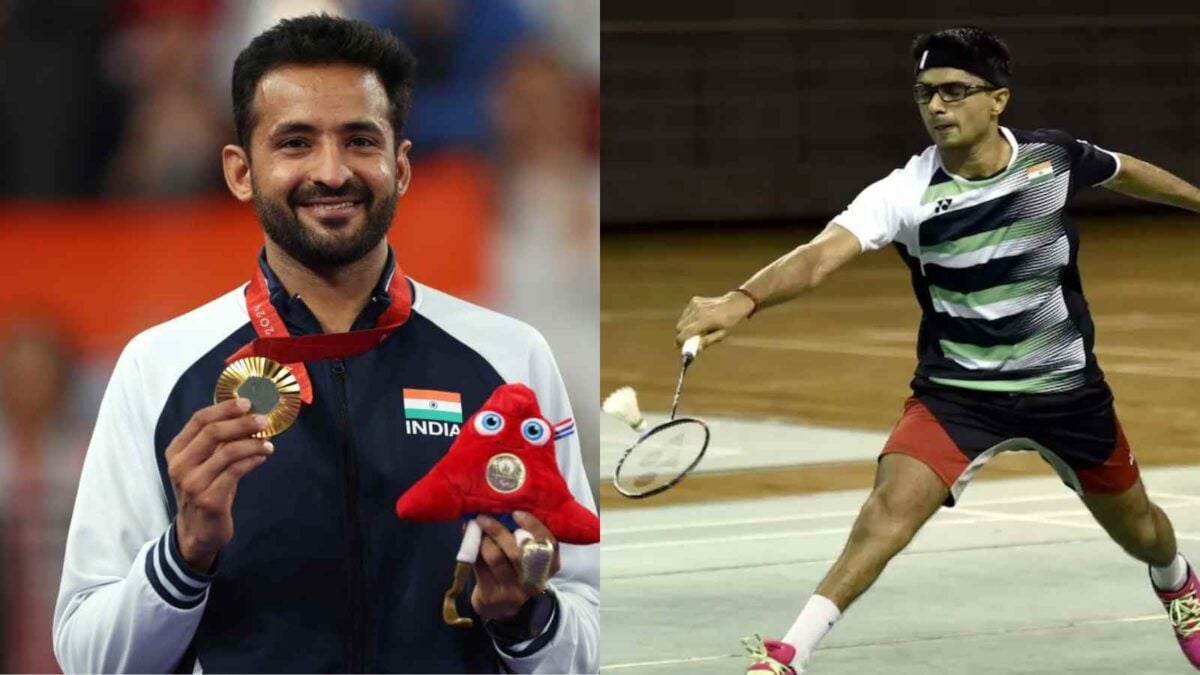
IITian-turned-para shuttler Nitesh Kumar won Gold in MS SL3 while IAS-turned-para shuttler Suhas Yathiraj won his second consecutive Silver after Tokyo in MS SL4.
Thulasimathi Murugesan and Manisha Ramadass (Silver and Bronze, respectively, in WS SU5) were the first Indian female para-shuttlers to finish on the Paralympic podium. They were followed by Nithya Sivan (Bronze in WS SH6).
Olympic shuttlers Lakshya Sen and Satwik-Chirag meanwhile devolved into nervous wrecks even as they held the lead in their knock-out matches, gifting their opponents with unforced errors as India went medal-less in badminton for the first time since 2008.
Conclusion
Genetics, lack of sporting culture, government apathy, predominance of cricket – these and related reasons have been cited to explain India’s lackluster showing at the Olympics. But these reasons would be equally valid in the case of the Paralympians, yet the Movement is going from strength to strength.
Since the poor showing at Rio 2016, the Indian government and private organizations have made concerted efforts to improve India’s performance in multi-sport competitions, which have historically not been commensurate with the country’s economic might and vast population.
These efforts have certainly borne fruit when it comes to the Paralympics where India’s medal tally has taken a quantum leap.
In the Olympics, while Indians have improved tremendously skills-wise, the medal-winning mentality, the killer instinct, has been sorely lacking among India’s elite athletes.
At least for the results in this Olympics and the previous one, you cannot hold the federations and government responsible for the results. They have all done whatever they can. Ultimately the responsibility is on the players to go and deliver when it matters the most.Prakash Padukone hit the nail on the head when he said
Compare the sincerity shown by Harvinder Singh in following his coach’s advice with the nonchalant attitude of the able-bodied archers towards the same coach.
India’s 2024 Paralympians have shattered many myths regarding the country’s lack of sporting success. It is time to celebrate their achievements and hope that the Olympians join them in the march to glory in 2028 and beyond.
In case you missed it!
- “I have a feeling…” Taylor Fritz makes bold prediction for US Open final against Jannik Sinner
- Martina Navratilova calls out ‘unfair’ and dangerous’ practice of including ‘male player’ Blaire Fleming during women’s volleyball game









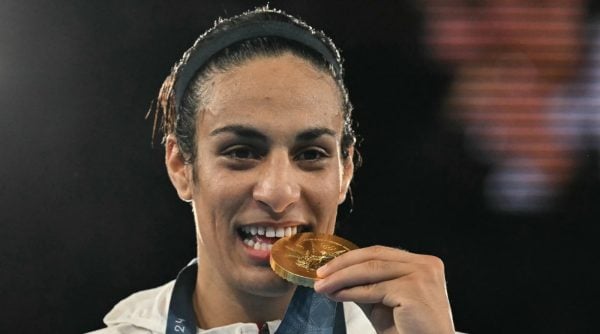
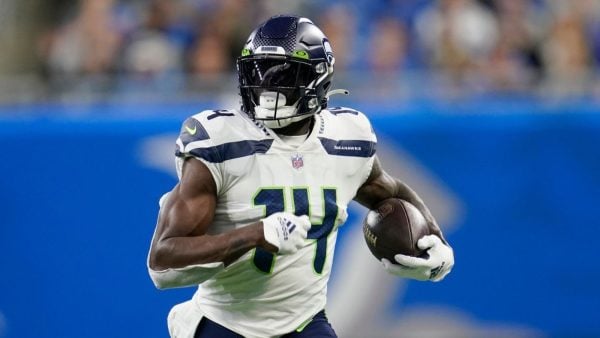

Niyati
(168 Articles Published)